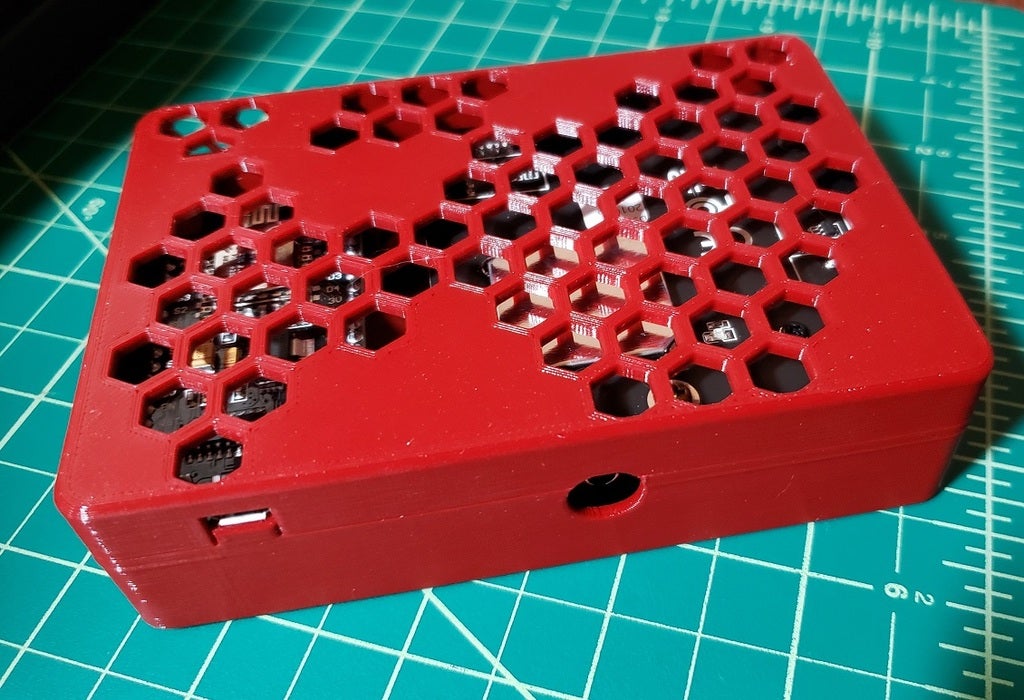
Indoor air quality monitor (snap-fit)
prusaprinters
<p>My 3D-printing philosophy: Things should print without supports and snap together whenever possible.</p> <p>Based on the airRohr project, this enclosure is a great (indoor) home for the project laid out here: <a href="https://sensor.community/en/sensors/airrohr/">https://sensor.community/en/sensors/airrohr/</a>. The recommended pipe fittings were not readily available in the US, but provide much better protection from the elements than my case full of holes does. The 3d printed case, however, looks nicer and is smaller.</p> <p>The enclosure contains a particle sensor (nova SDS011 PM2.5/PM10), temperature/pressure/humidity sensor (BME280), and a microcontroller (nodeMCU v3 / ESP8266). See sensor.community link above for assembly and software instructions.</p> <h3>Print instructions</h3><h3>Category: Electronics Summary</h3> <p>My 3D-printing philosophy: Things should print without supports and snap together whenever possible.</p> <p>Based on the airRohr project, this enclosure is a great (indoor) home for the project laid out here: <a href="https://sensor.community/en/sensors/airrohr/">https://sensor.community/en/sensors/airrohr/</a>. The recommended pipe fittings were not readily available in the US, but provide much better protection from the elements than my case full of holes does. The 3d printed case, however, looks nicer and is smaller.</p> <p>The enclosure contains a particle sensor (nova SDS011 PM2.5/PM10), temperature/pressure/humidity sensor (BME280), and a microcontroller (nodeMCU v3 / ESP8266). See sensor.community link above for assembly and software instructions.</p> <h3> Print Settings</h3> <p><strong>Printer Brand:</strong></p> <p>Prusa</p> <p><p class="detail-setting printer"><strong>Printer: </strong> <div><p>i3 MK3</p></div><strong>Rafts:</strong></div></p> <p>No</p> <p><p class="detail-setting supports"><strong>Supports: </strong> <div><p>No</p></div><strong>Resolution:</strong></div></p> <p>0.2</p> <p><p class="detail-setting infill"><strong>Infill: </strong> <div><p>20%</p></div><br/> <strong>Filament:</strong><br/> Atomic Filament PLA Dark Cherry Red <br/> <p class="detail-setting notes"><strong>Notes: </strong> </p><div><p>I printed mine in PLA because it looks nicer than the PETG and ABS filaments I have, but for more durability (or if this sensor is going to be outdoors at all) I would suggest PETG or ASA. At the very least, keep it out of the sunlight and the rain.</p> The BME280 sensor sits in a little room in the corner of this enclosure, which gets plenty of ventilation to the outside and is more or less blocked off from the other components.</div></div></p> <p>All components snap-fit into the enclosure, but screw holes are provided for extra stability - particularly a good idea close to the USB connector and SDS011 tube fitting. The BME280 is kind of pinched at the wires and does not truly snap into place, but it is so lightweight it doesn't move around much. Glue into place if desired.</p></p></p></p>
With this file you will be able to print Indoor air quality monitor (snap-fit) with your 3D printer. Click on the button and save the file on your computer to work, edit or customize your design. You can also find more 3D designs for printers on Indoor air quality monitor (snap-fit).
